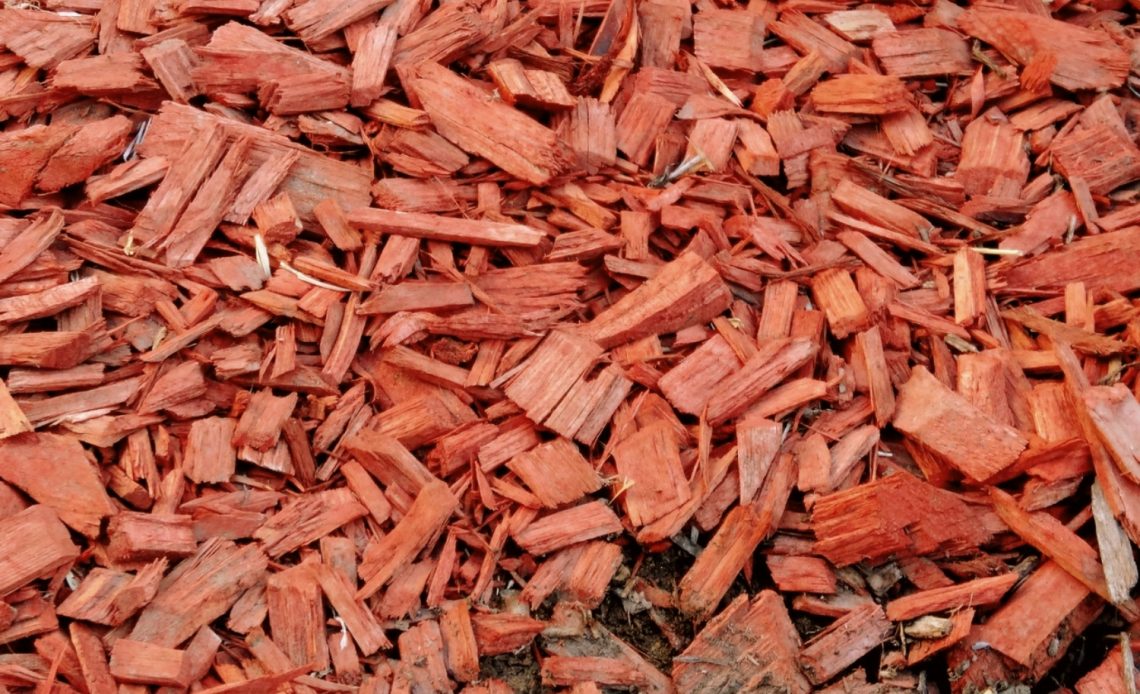

We’re here to help! Wild Yards is a completely free website that is 100% dedicated to helping you create a wildlife-friendly, sustainable yard. Read more
WildYards is reader-supported. When you buy a product through a link on our site, we may earn a comission. Every product is independently selected by our (obsessive) editors and our reviews are unbiased and objective. Read more about our mission or our privacy policy.
Mulch is both aesthetically pleasing and functional.
Not only does a fresh layer of mulch allow the plants in your landscaping to pop, but it also regulates the soil temperature and helps the soil to retain more moisture than it would otherwise.
Mulch acts as an insulator for the plants in your garden, and cedar mulch, in particular, has some amazing benefits to offer.
This organic mulch is incredibly versatile and can be used for potted plants, raised beds, ornamental flower beds, and vegetable gardens alike.
But what makes cedar mulch so great and why should you use it in your garden?
Cedar wood is rot-resistant and lasts much longer than softwood mulches, like pine mulch. The potent oils in cedar mulch also help repel harmful insects, protecting your plants from infestation.
What are the benefits of using cedar mulch?
You don’t have to use mulch in your garden, but there are many benefits to using mulch that make it well worth the extra time and money.
Let’s take a look at some of the benefits of using mulch, and a few of the advantages of using cedar mulch specifically.
Mulch suppresses weeds
Nobody likes to spend all of their time weeding their garden.
If you’ve had it with dandelions and thistles sprouting in your flower beds, a thick layer of mulch can prevent them from popping up altogether.
Mulch is best when spread around plants that are already growing.
When spread over the soil, mulch blocks out the sunlight. And if seeds don’t have access to some sun, they can’t germinate.
You can spread mulch around your seedlings and mature crops to help snuff out weeds.
Just be sure not to mulch over where you’ve planted seeds otherwise it may prevent them from sprouting, too.
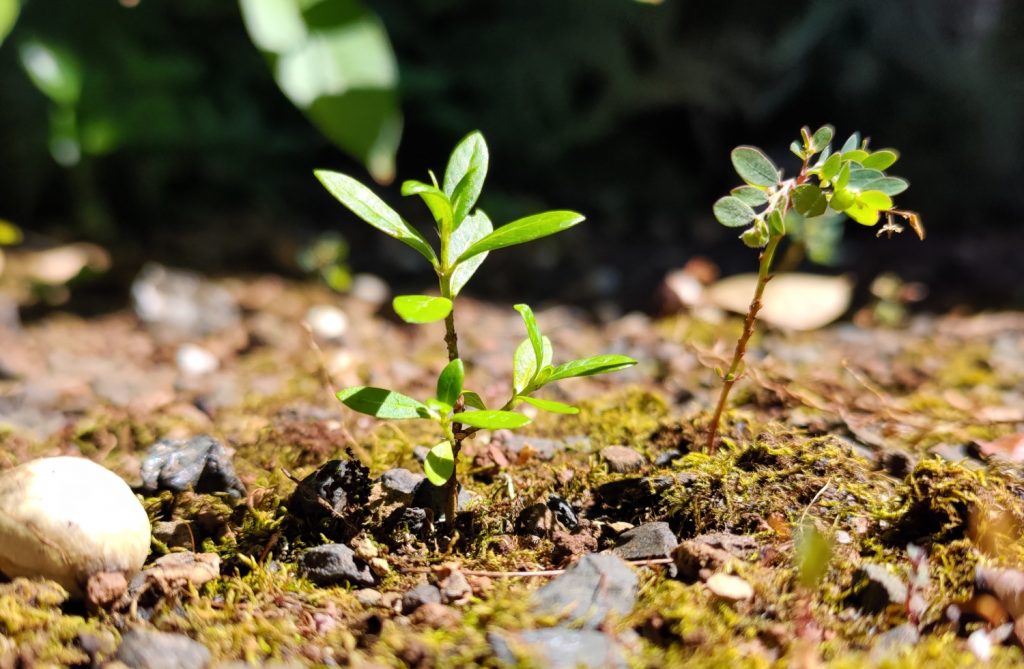
Mulch adds structure to the soil
As organic mulches decay, fibrous material makes its way into the soil, where it adds pore space.
Mulch makes sandy soils loamier as it decomposes. By contrast, it makes clay-based soils looser and less compacted.
Soil structure is important because it influences how well soil retains moisture, how well it drains, and how much air can penetrate below the surface.
Over time, mulch enhances your soil’s ability to stay moist, while simultaneously making it easier for excess water to escape quickly.
By loosening the soil, mulch makes it easier for plants to take root. It also allows for better air circulation, which prevents diseases like root rot.
Applying biodegradable mulch is great for the soil because it brings less-than-ideal soils closer to the sweet spot that plants prefer.
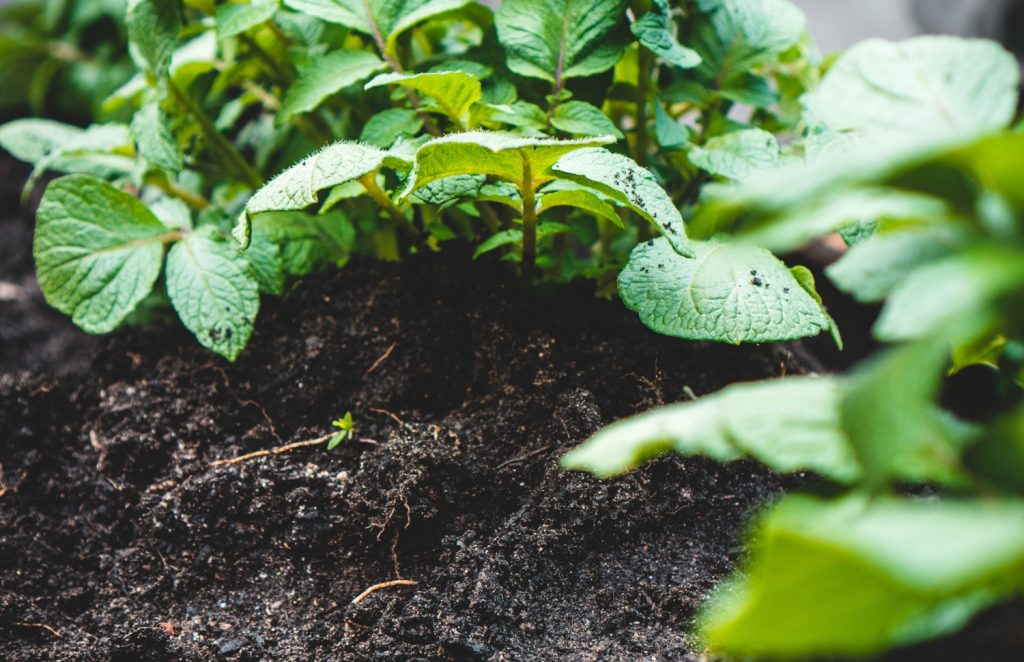
Mulch helps the soil retain more moisture
Watering your plants is essential. Regular watering helps seedlings and newly transplanted plants get established.
When plants begin flowering and fruiting, their water requirements increase dramatically. Rising temperatures also increase a plant’s water demands.
If your growing zone is prone to droughts during the summer months, you probably cringe just thinking about the effect all of the extra watering will have on your water bill.
The biggest advantage that mulch has to offer is that it protects the soil from excessive moisture loss.
A layer of mulch shields the soil below from the scorching sun.
Keeping the soil out of the sun’s rays slows the evaporation rate, meaning mulch allows you to go much longer without having to water your plants.
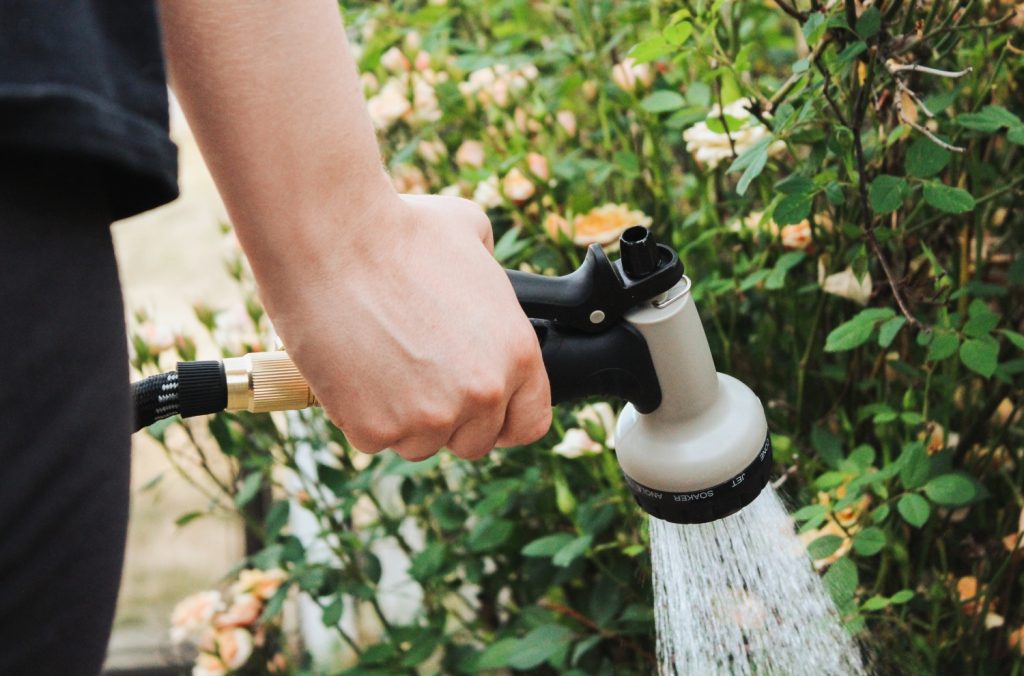
Mulch regulates soil temperature
Protecting the soil from sunlight also helps regulate soil temperature.
Mulch acts as an insulator, keeping soil cooler in hot weather, and warmer in cold weather.
When temperatures fall, mulch absorbs the heat, keeping seeds and plant roots warm so they can keep growing, even when it gets a bit nippy outside.
And, when the mercury starts climbing, mulch deflects excess heat by preventing evaporation. Trapping moisture in the soil helps keep it cool, so the plants in your garden don’t get overheated.
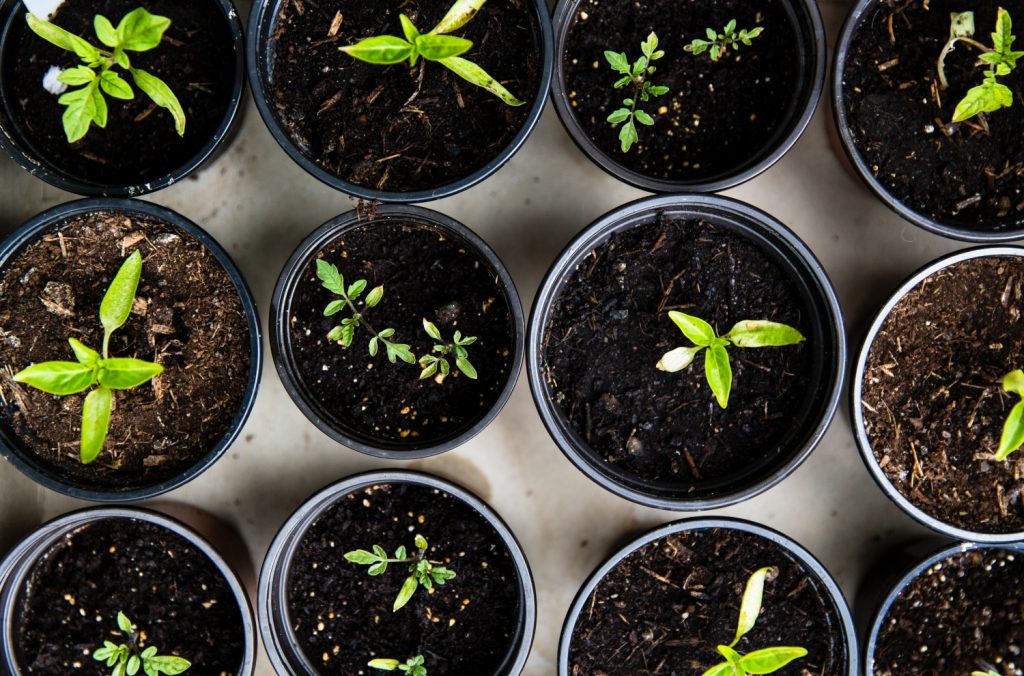
Cedar mulch makes flower beds look great
A good mulch helps keep the soil moist and insulated. But not all mulches look good.
Newspapers, cardboard boxes, burlap. These organic mulches all have their uses, but they aren’t very nice to look at.
You certainly wouldn’t want to use them to mulch your carefully manicured flower beds!
Cedar mulch, on the other hand, possesses all of the qualities of a good mulch, and it looks great, too.
Cedar mulch is tan to reddish brown in color, depending on which variety of cedar was used to make it.
This mulch creates a sophisticated backdrop for the plants in your flower beds, making them look well-tended.
Spreading a layer of cedar mulch in your landscaped beds is a fast and inexpensive way to boost your home’s curb appeal.
Just be sure to purchase cedar mulch that has not had any dyes added to it.
Believe it or not, some manufacturers dye wood chip mulch to give it a uniform color.
Unfortunately, these dyes can be damaging to the soil. So it’s best to look for cedar mulch that does not contain any chemical additives.
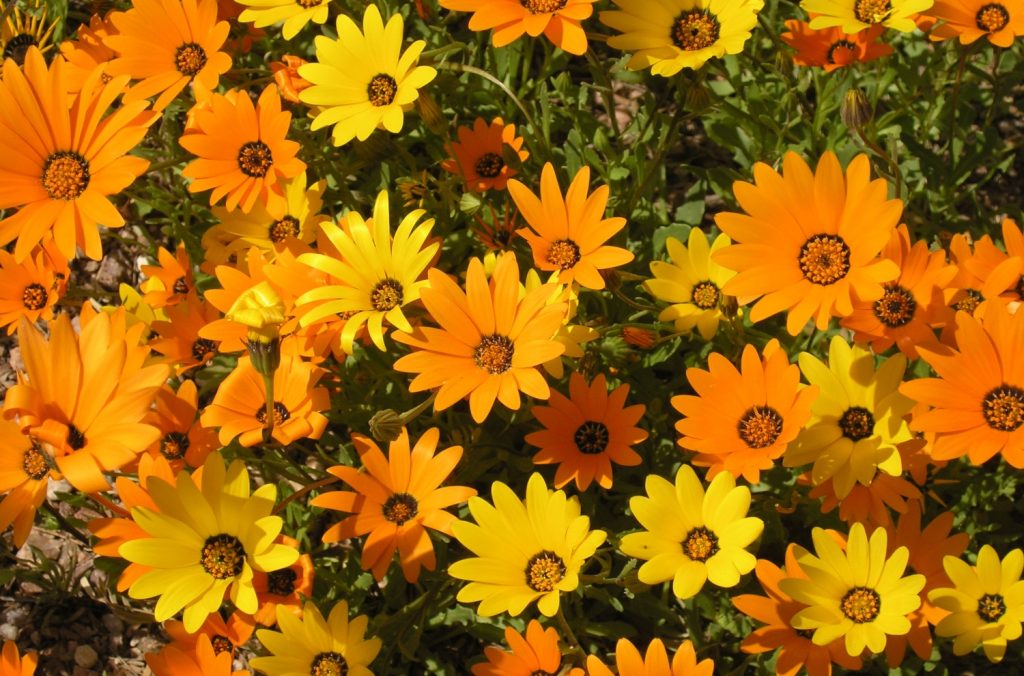
Cedar mulch is rot resistant
As we touched on earlier, cedar mulch is rot-resistant. Now, that doesn’t mean that it will never rot. It just means it takes cedar mulch much longer to begin decomposing compared to other types of mulch.
Cedar trees are full of resin. Because the pores in the surface of the wood have essentially been shellacked by nature, there’s nowhere for water to soak in.
This makes cedar somewhat water resistant, so it takes several years before it begins to break down.
Cedar wood is so rot-resistant that it’s often used for fence posts. In many cases, untreated cedar posts last longer than treated pine posts.
It’s for this reason it’s best to use cedar posts in tandem with pine, fir, or another softwood when constructing a hugelkultur bed.
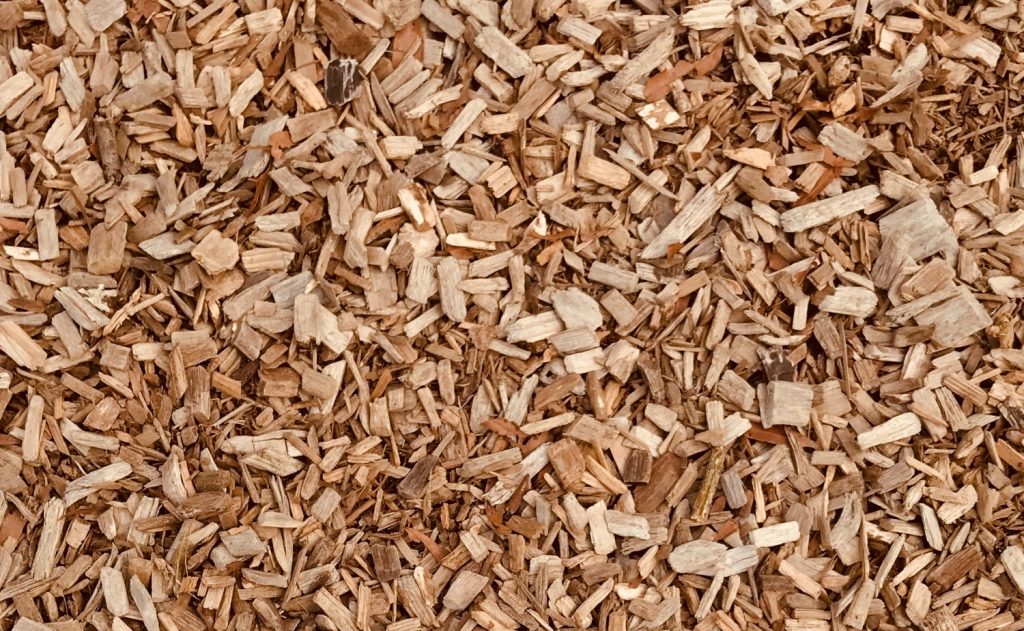
Cedar mulch fights insect infestations
Another advantage cedar mulch has over other wood chip mulches is its ability to repel insects.
Cedar wood is rich in oils that have been shown to have potent insecticidal properties. Cedar oil is especially effective when it comes to repelling ants, ticks, flies, and mosquitoes.
If you’ve struggled with insect problems in the past, using cedar mulch in your garden and flower beds can help protect your plants naturally.
Combined with a homemade insecticide, you may finally be able to fulfill your dreams of growing an organic garden.
Because cedar mulch is also effective at repelling termites, it’s a great choice of mulch for foundation landscaping. Spreading cedar mulch around the foundation of your home can help keep these costly insects out.
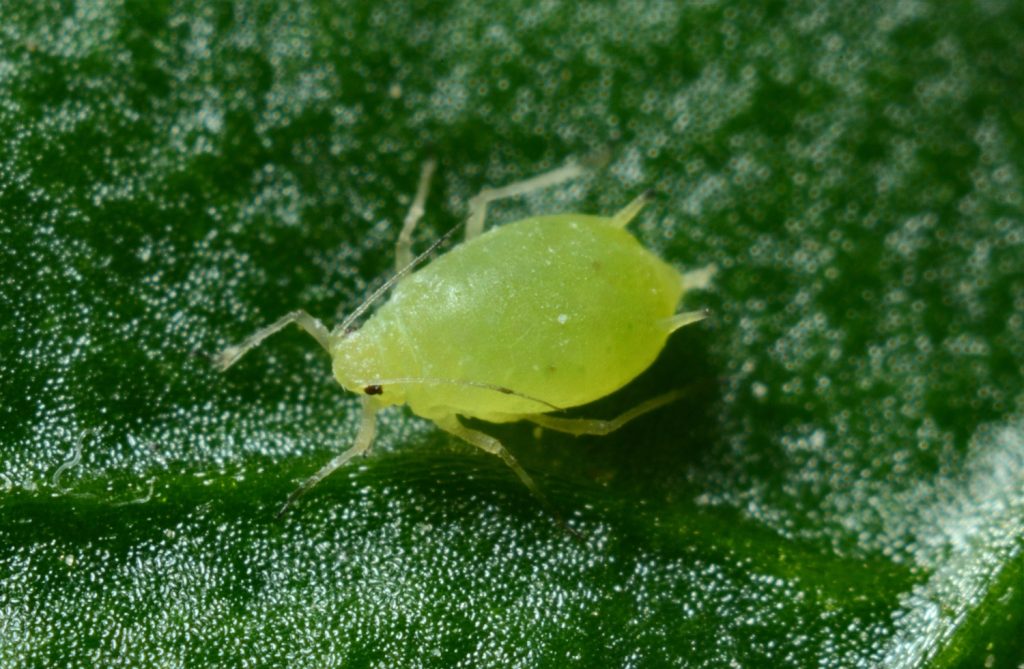
Cedar mulch adds nutrients to the soil
Cedar mulch isn’t as effective as a fertilizer as, say, manure or compost.
But because it’s plant-based, it can provide the plants in your garden with some valuable nutrients as it decomposes.
Using cedar wood chips as mulch adds micronutrients like sulfur, carbon, and magnesium to the soil.
Although plants don’t rely on these three elements as much as nitrogen, phosphorus, and potassium, they’re still a valuable part of your plant’s “diet”.
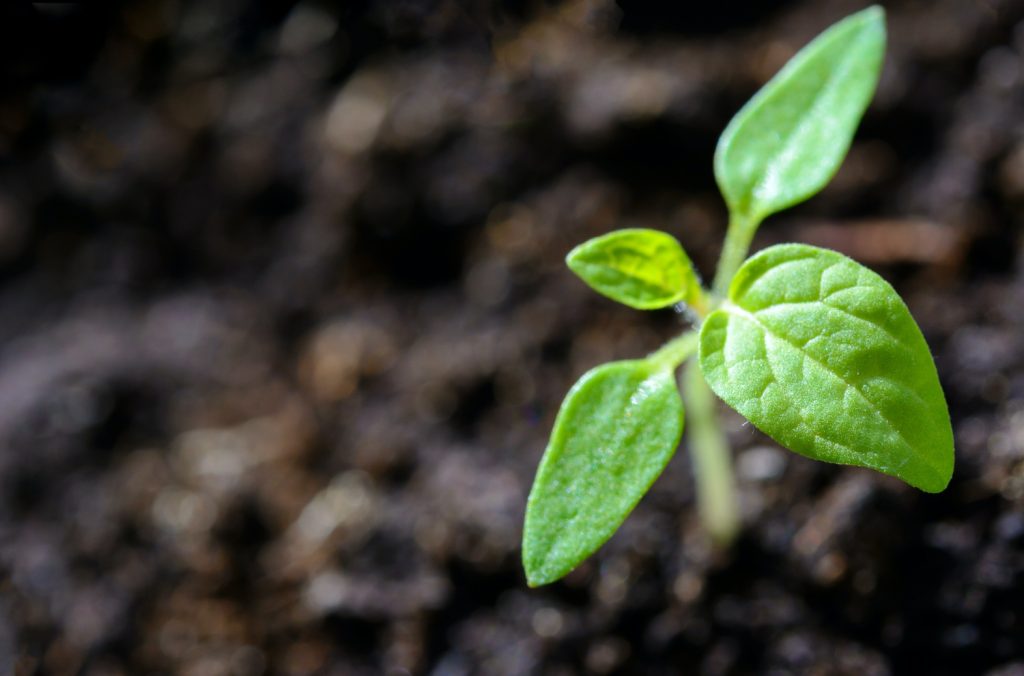
What are the disadvantages of using cedar mulch?
Cedar mulch has a lot to offer, but it’s not totally perfect. Here are a few of the downsides of using cedar mulch that are worth considering.
Cedar mulch can be costly
Because cedar wood makes for a much higher quality mulch than softwoods like pine, it tends to be more expensive.
Depending on where you’re located, cedar wood chips may cost double the price of pine wood chips.
However, because cedar wood lasts much longer than other types of wood chip mulches, it’s a much cheaper choice in the long run.
But some gardeners are hesitant to fork over more money upfront. After all, growing your own fruits and veggies is supposed to help you save money, not lose it!
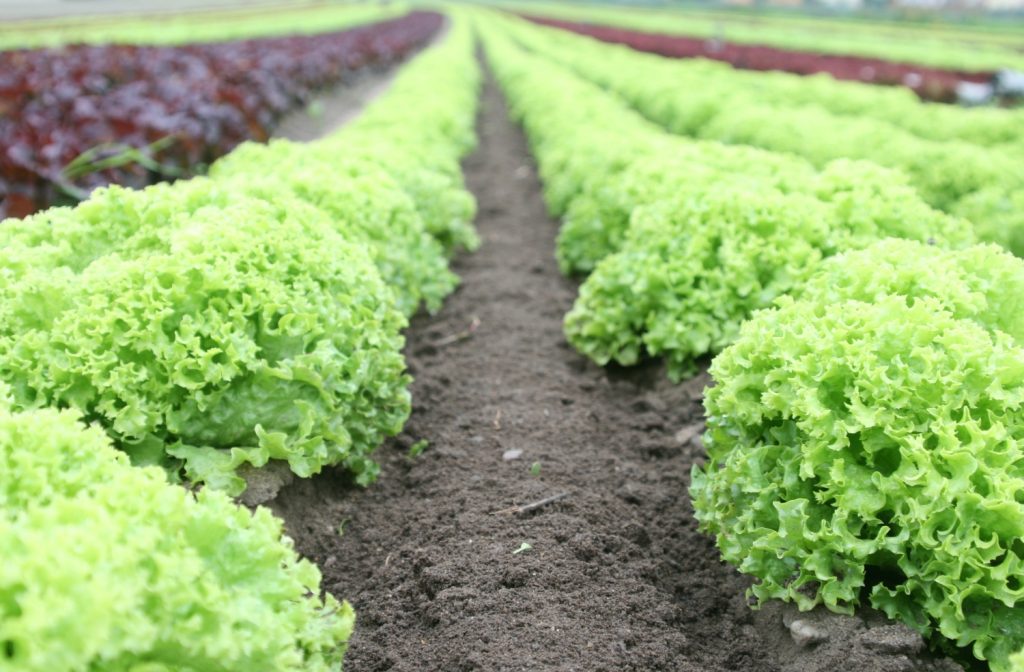
Cedar mulch leaches nitrogen from the soil
As cedar wood chips break down, they pull nitrogen out of the soil.
This can be bad news for nitrogen-loving plants, like tomatoes and peppers.
If you want to use cedar mulch in your garden, be sure to apply a high-nitrogen fertilizer first to mitigate the nitrogen-depleting effects of cedar mulch.
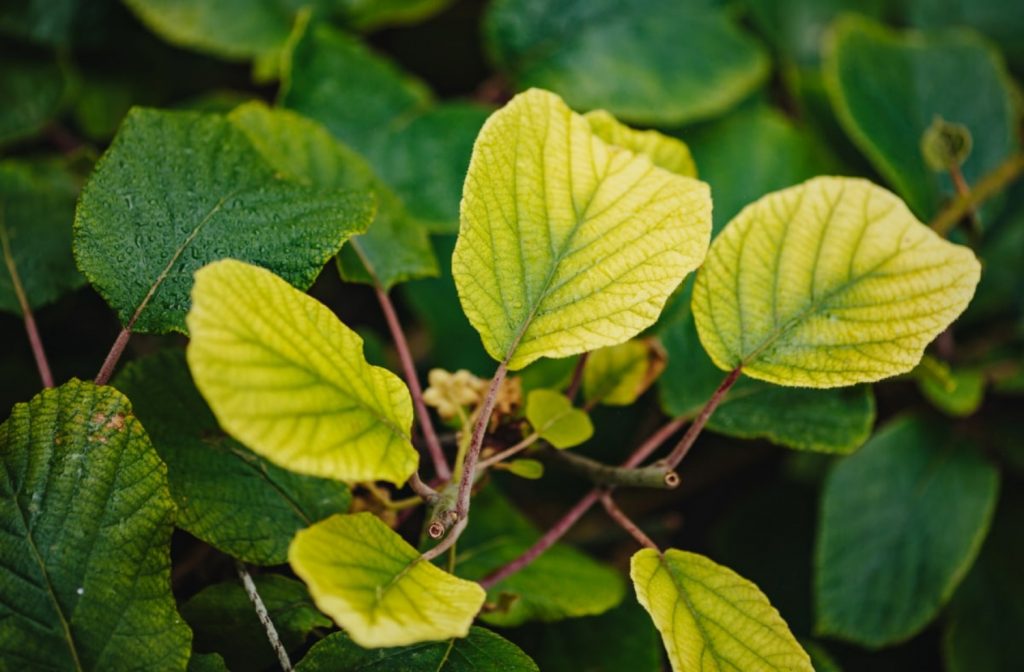
Cedar mulch has a strong smell
Cedar mulch is a lot like marigolds in that some people love the smell, and others… well, others hate it.
Cedar is a strong, unique smell. And if it bothers you, then spreading cedar mulch around the plants in your landscaping is going to take some of the enjoyment out of your garden.
If you’re sensitive to cedar pollen, spreading cedar mulch may also aggravate your allergies, which is another good reason to consider alternative wood mulches.
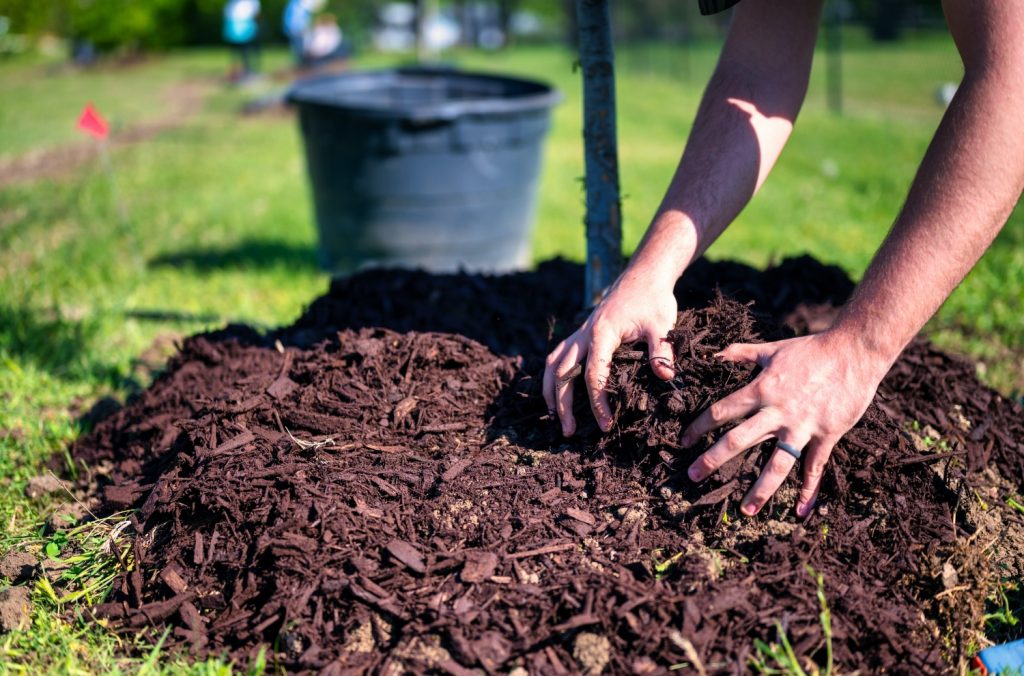
Cedar mulch may repel beneficial insects
Although cedar mulch can be helpful in preventing insect infestations, the downside to this is that it is equally effective at repelling good bugs, too.
Ladybugs and lacewings, two insects that prey on damaging bugs like aphids, may not be inclined to visit your garden if it’s covered in a layer of cedar mulch.
Tall plants, like sunflowers, which tower high in the sky, may still be visited by these beneficial insects. The space between the mulch below and the blooms above is usually sufficient to make them feel welcome.
But for low-growing flowers, like coneflowers, zinnias, and asters, consider using a different type of mulch instead, if you want more beneficial insects to visit your garden.
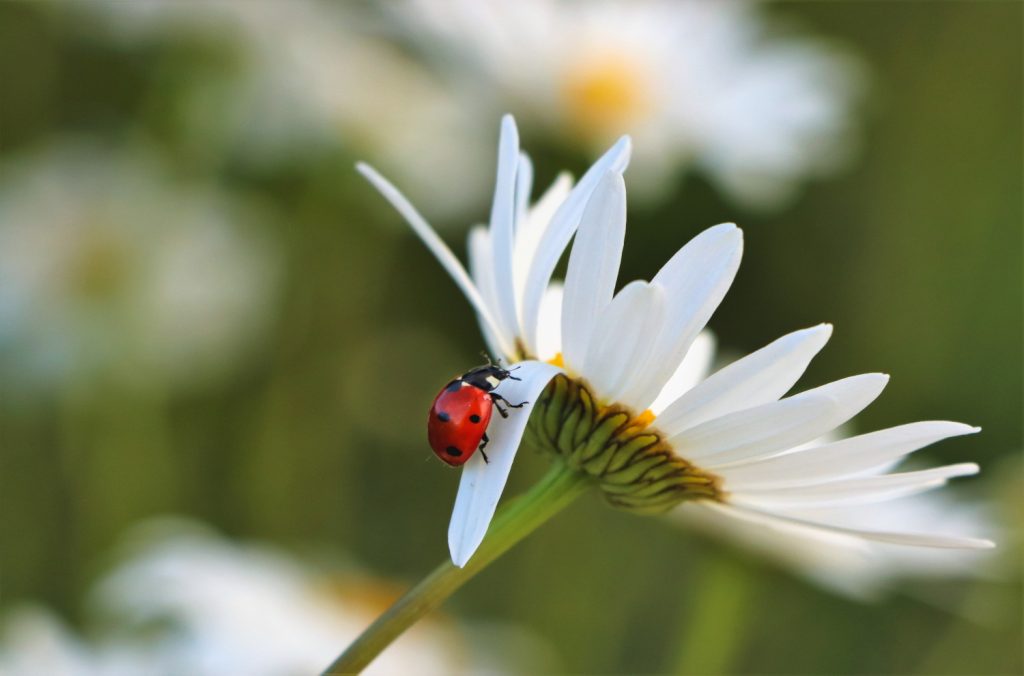
Cedar mulch can acidify the soil
Like other conifers, cedar has a tendency to acidify the soil.
Cedar wood chips release acetic acid that may harm your plants.
On the plus side, cedar mulch can make overly alkaline soils closer to neutral over time. Since most plants thrive when the soil pH is between 6.0 and 7.0, this can be a good thing.
But if you’re growing pH-sensitive plants, like hydrangeas, acidifying the soil could be detrimental.
Test your soil’s pH prior to applying mulch to determine whether or not cedar mulch would be a wise choice for the plants in your garden.
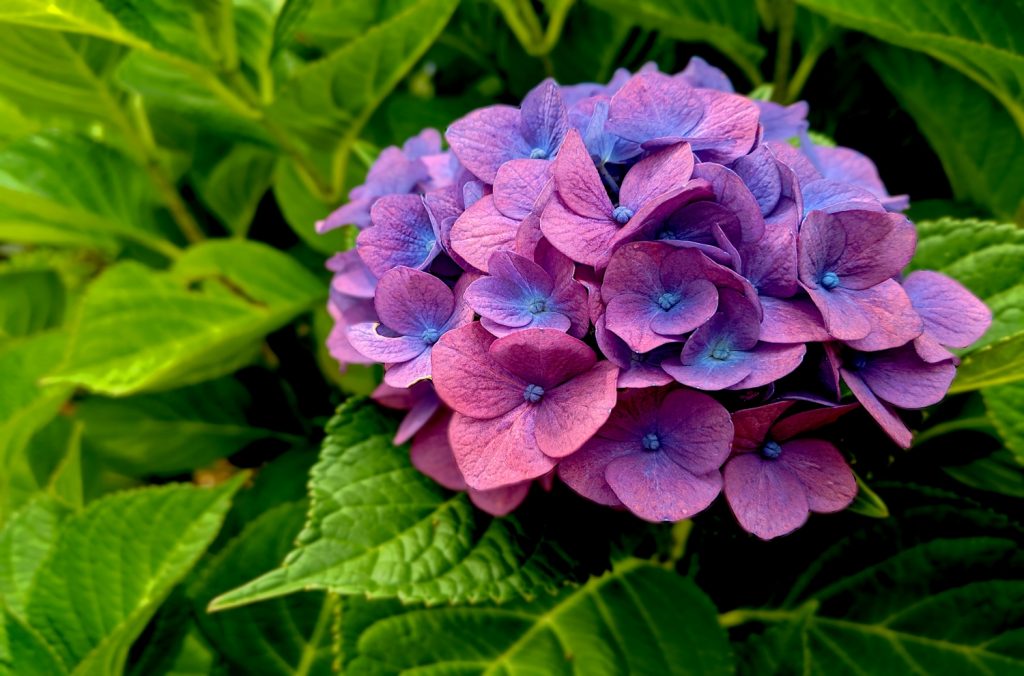
Cedar mulch can make the soil too moist
Wood chip mulches in general can do more harm than good when spread over boggy soils.
If your native soil tends to stay damp on its own, it’s best to amend it with a healthy dose of gravel and/or horticultural sand to improve drainage.
Only once the soil’s texture has been improved should you consider applying mulch.
Lightweight mulches, like husk mulch, work best for soils that need added protection but don’t need help staying moist.
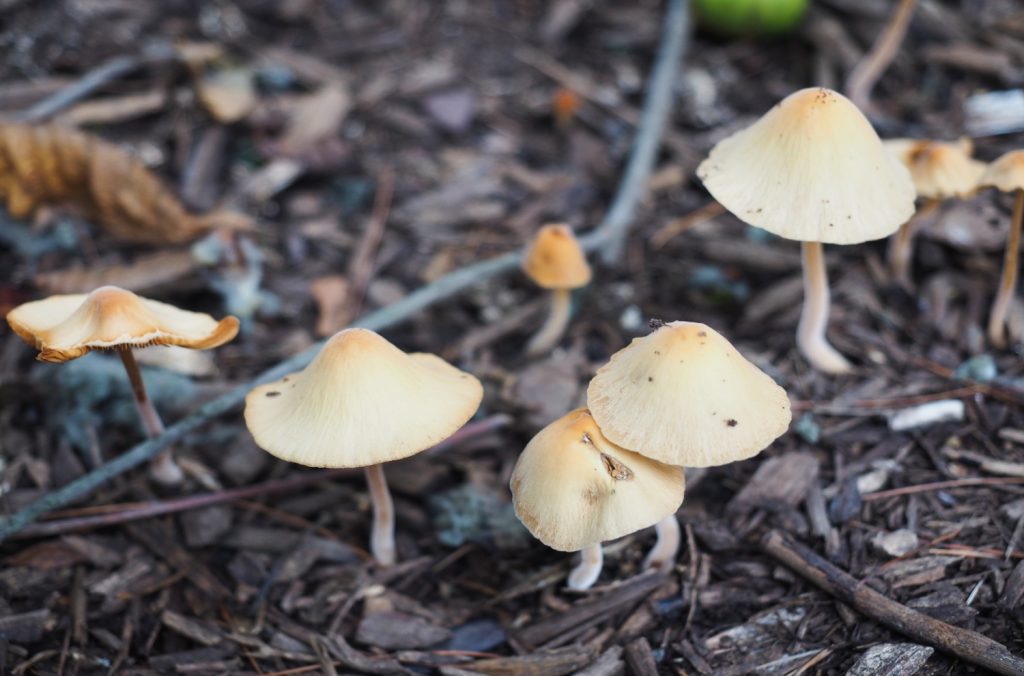
How to use cedar mulch in the garden
Now that you know about the many benefits that cedar mulch has to offer, let’s find out how you can use it in your garden.
Determine how much mulch you’ll need
Before you head down to the garden center, first you’ll need to figure out how much cedar mulch your garden will need.
It takes about 2.5 cubic feet of mulch to cover 10 square feet.
Calculate the area of your flower bed to determine exactly how much mulch it will take to cover the soil.
Clear the area
When you’re ready to get started, first take a hoe or rake and begin clearing the area.
Remove any rocks, sticks, stumps, or debris. The idea is to make a level surface for the mulch.
Although mulch can cut down on weeding, it’s not very effective at killing established weeds, just at preventing them from sprouting up.
So you’ll also need to remove any grass or weeds in the area before applying the mulch.
You can add the uprooted plants to your compost heap to provide the plants in your garden with some extra nutrition later on.
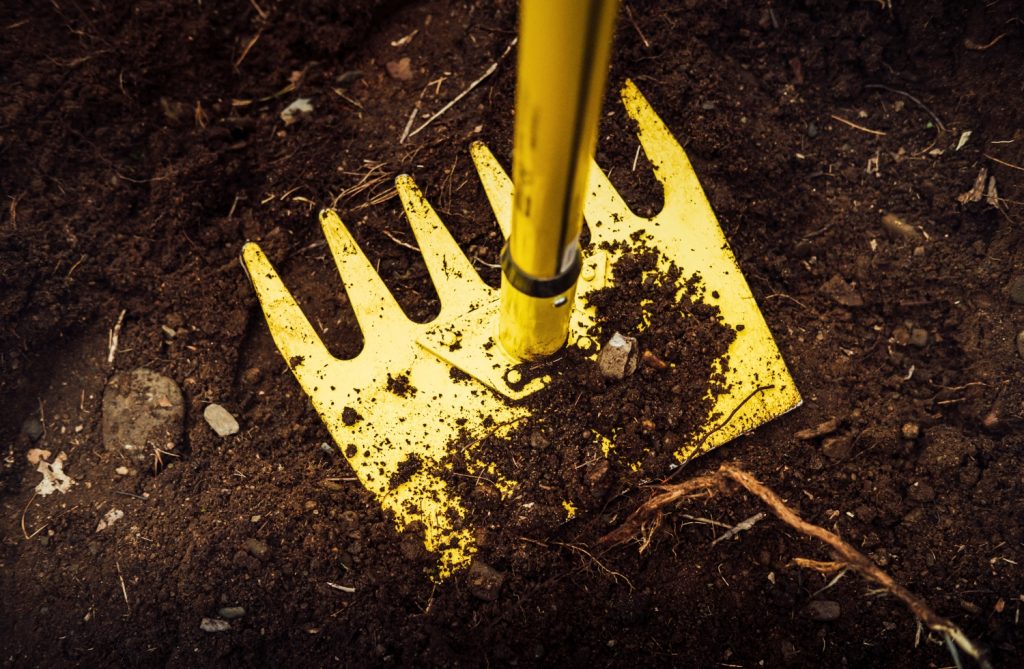
Water the soil
Once the area is clear and level, water the soil well.
It’s best to apply mulch to damp soil. That way, you can ensure you’re locking plenty of moisture in.
You can also water the area deeply after applying the mulch to make sure the area stays hydrated and your plants have plenty of extra moisture.
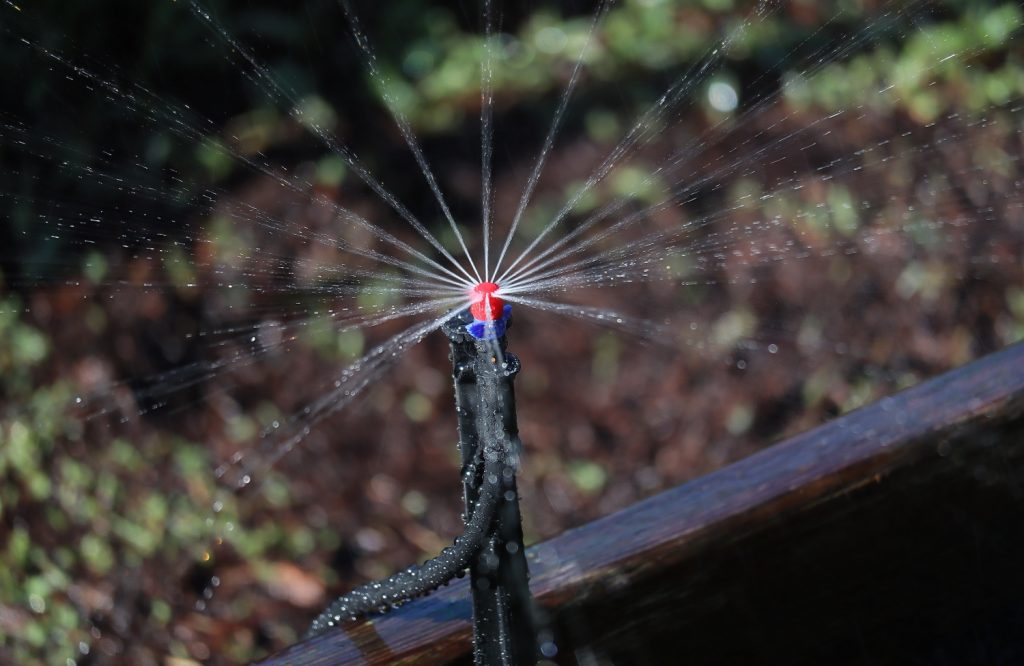
Spread the mulch
Use a rake and shovel to spread the mulch evenly into a 2” to 4” layer.
Spreading mulch less than 2” thick renders it ineffective, and spreading mulch more than 4” thick is unnecessary. When mulch is thicker than it needs to be, it tends to slide around within the bed and spill out over time.
You should also avoid creating mounds of mulch around your plants.
Mulch volcanoes, as they’re often called, suffocate the plant’s root collar, which can kill them.
Where can you use cedar mulch?
Cedar mulch is versatile, and can be used for all sorts of things! Here are a few of the best places to use cedar mulch.
Large flower beds
Cedar mulch is nice to look at. It’s the perfect way to dress up your large landscaped flower beds.
Spread a thick layer of cedar mulch in your landscaped beds to make them look neat and tidy.
You can also use cedar mulch in raised beds, flower boxes, and pots to dress them up.
Apply a thick layer of mulch to landscaped beds. But be sure to use only a thin layer of cedar mulch for plants growing in containers to ensure good air circulation.
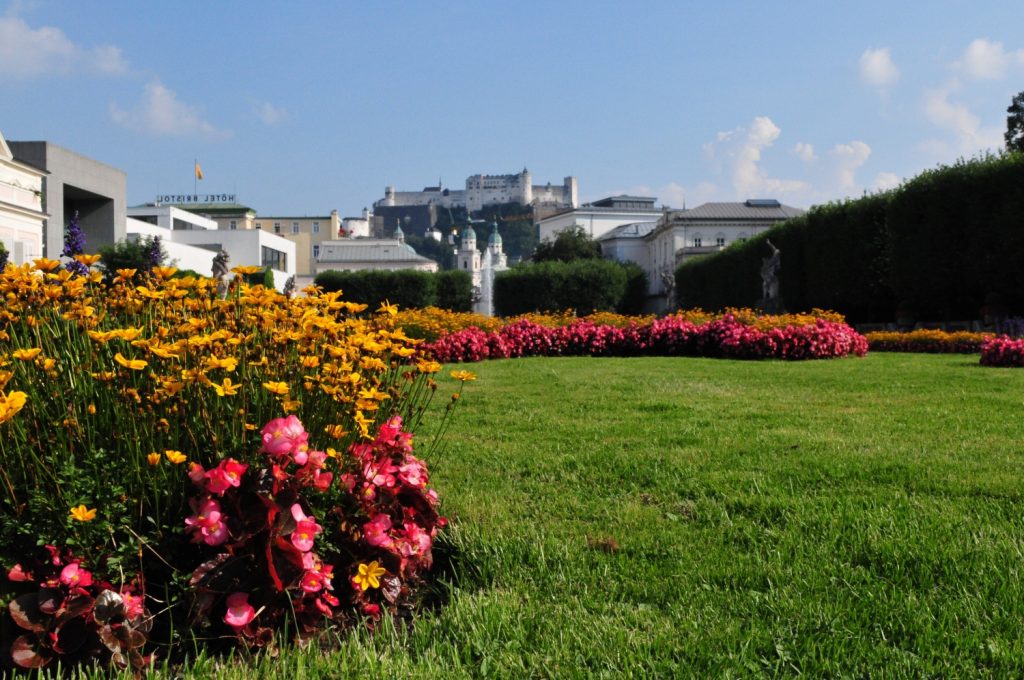
Vegetable gardens
Although cedar mulch is more often used in flower beds, it can also be used for vegetable gardens.
Because cedar mulch helps deter unwanted pests, it can be great for growing veggies, especially leafy greens like romaine lettuce that don’t need to be pollinated by beneficial insects to be harvested and enjoyed.
If, on the other hand, you plan to grow flowering/fruiting crops, like strawberries, eggplants, and watermelons, you should avoid using cedar wood chips as mulch.
These plants rely on pollinators to produce, and because the oils in cedar wood repel beneficial pollinators, it could hinder crop production.
Additionally, cedar mulch can be expensive, so it may not be the best choice for one-off vegetable gardens.
But if you plan on reusing your garden beds for years, then it’s very cost-effective.
Pathways and play areas
Spread a thick layer of cedar mulch along pathways to fill in between logs, stepping stones, and pavers.
Cedar mulch is durable and can stand up to regular foot traffic.
It’s also an excellent choice of footing for areas where your kids and pets play. You can use cedar mulch to prevent vegetation from growing without having to rely on chemical-laden herbicides to do the same job.
Cedar mulch also makes picking up your dog’s, ahem, “presents” much easier.
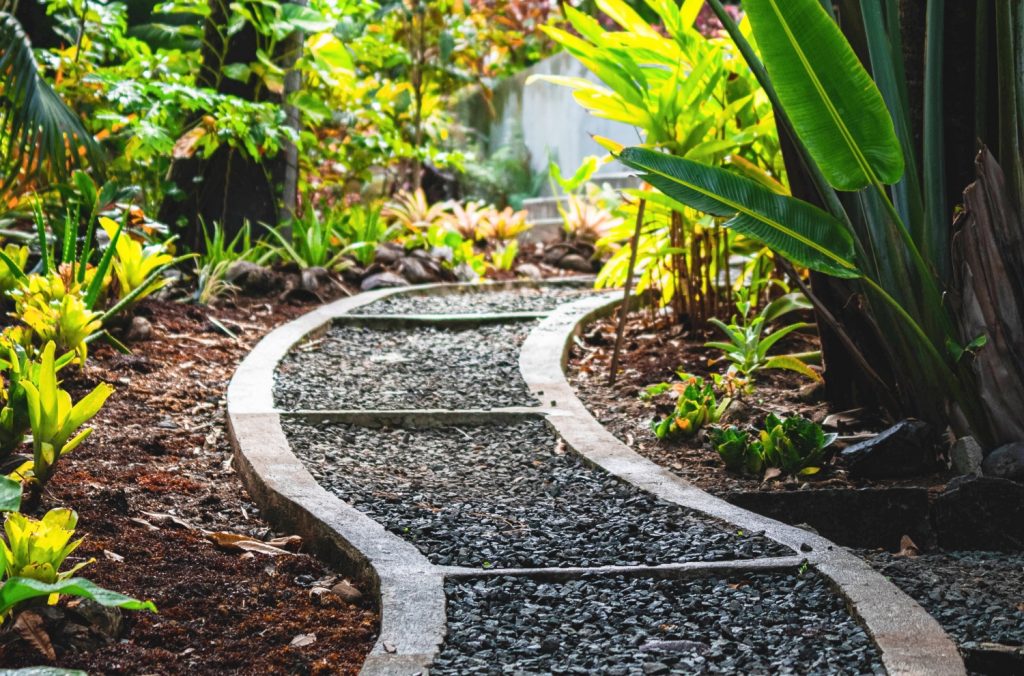
Outdoor seating areas
What good is a flower garden if you don’t go outside and enjoy it? Use cedar wood chip mulch to create a seating area in your backyard where you and your guests can take in the flora and fauna.
Cedar mulch is a natural alternative to other types of footing, like rubber mulch, so they’re a great option for nature-inspired landscapes, like a Japanese zen garden.
Using cedar mulch is a great way to utilize your outdoor space without interrupting nature. It also helps you level your seating area, so you can stabilize your chairs, tables, and swings.
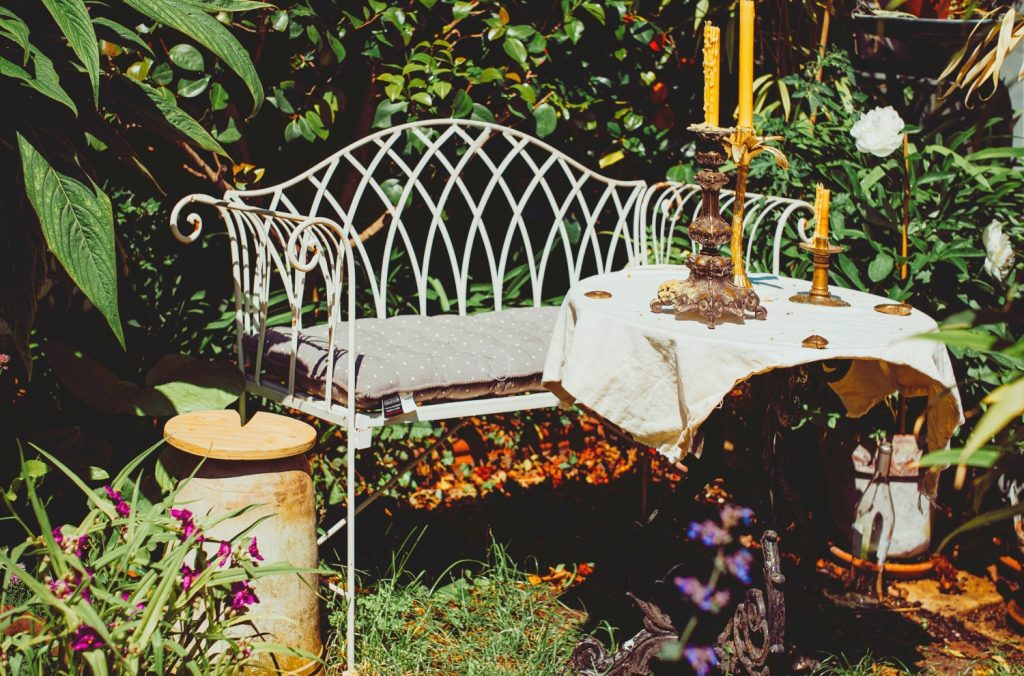
Around trees
Spreading a layer of cedar mulch around your ornamental and shade trees saves you from having to weed-eat around them.
Since damage from mowers and weed-eaters can leave trees susceptible to diseases and infections, spreading mulch is a much safer option, anyway.
Use stones to make a bed around your tree, and to keep the mulch from escaping.
Spread the mulch evenly, and avoid building a mulch volcano around the tree’s root collar. Mulch volcanoes are incredibly detrimental to your tree’s health, and they can even kill them in a matter of a few years.
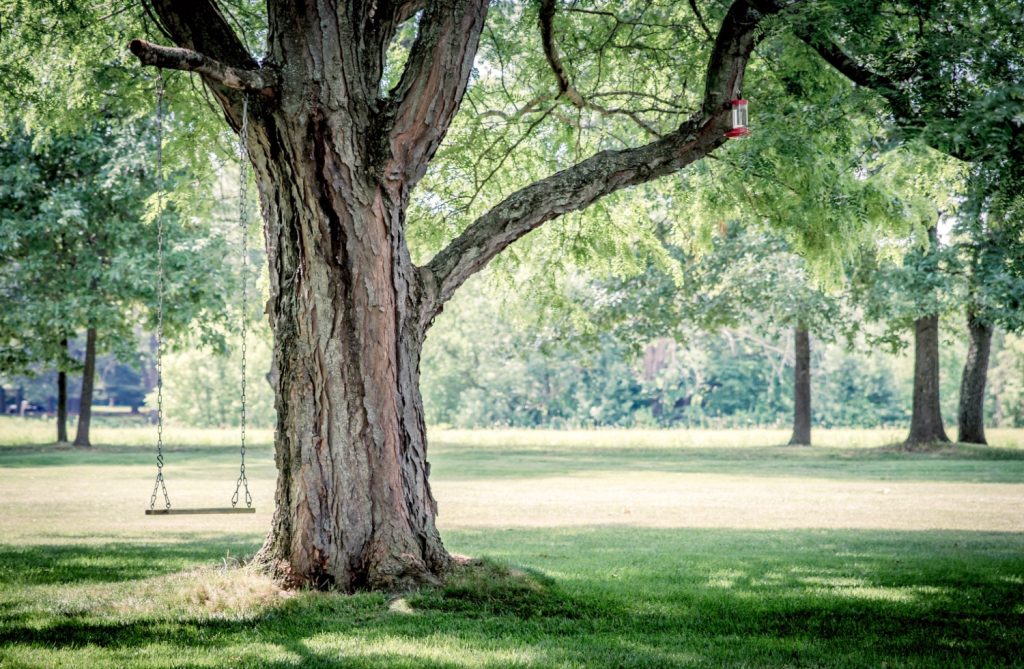
Around shrubs, bushes, and hedges
Use cedar mulch to make the shrubs in your landscaping look more neat.
A thick layer of mulch around your hedges adds instant curb appeal. Plus it helps the soil retain extra moisture so your shrubs can grow thicker foliage.
A good hedge doesn’t just offer privacy for you from your neighbors, but it also gives birds and squirrels a place to hide from predators and to get out of the rain.
Using wood chip mulch around your shrubs and bushes helps them get established quickly, and keeps them in good health, which has a beneficial effect on the entire ecosystem.
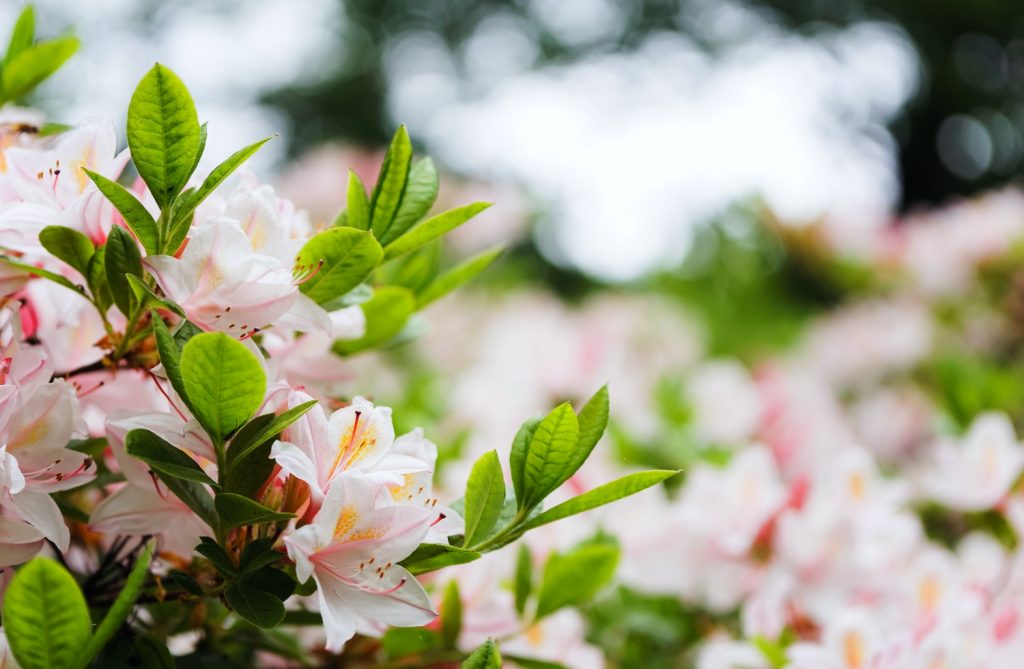
In sloped beds
There are pros and cons to situating your home on a hill.
One of the advantages is that your home will have a great view. Plus, it will ensure your home is what all of your guests will notice first.
But one of the definite downsides to living on a slope is that erosion is inevitable.
Fortunately, there are ways to mitigate erosion.
Trees that produce strong root systems, like redbud trees, pine trees, maple trees, and cypress trees can help keep the soil in place around your home.
Ground cover plants, like creeping juniper and sedum are also helpful for preventing erosion.
But you can also use cedar mulch to help stop erosion, especially in sloped garden beds with stone or rock borders.
A 4” layer of cedar mulch acts as a filter, slowing the flow of water to the soil. That way, the soil can retain water without washing away.
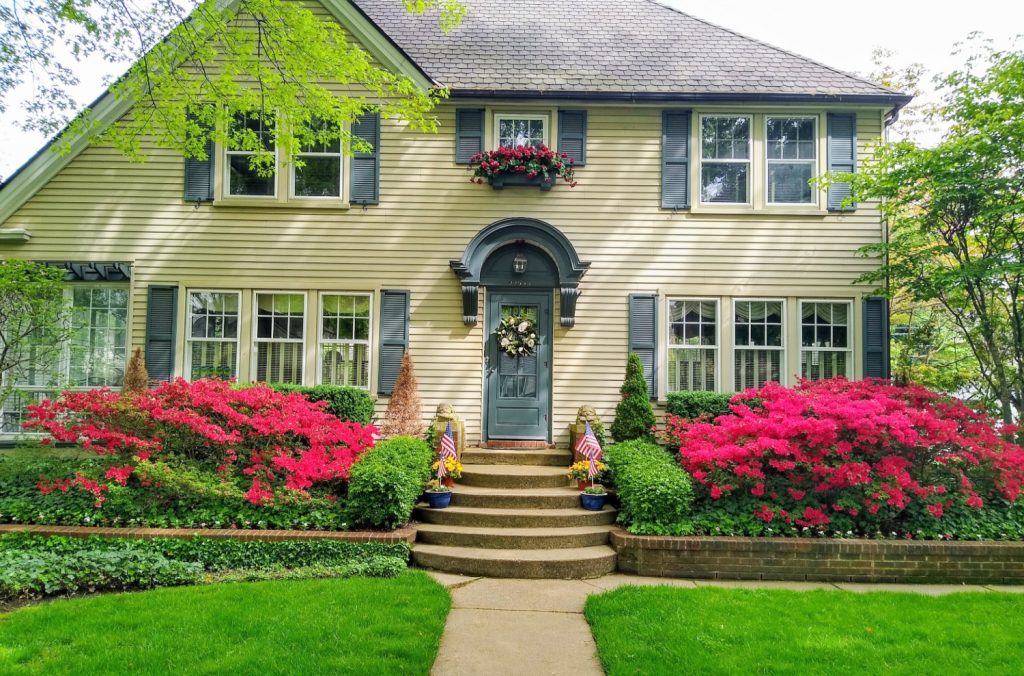
Rock gardens
Cedar mulch doesn’t just look great in flower beds, it can be used to enhance the look of your rock garden, too.
Using cedar mulch around the stones in your rock garden adds some texture and color to the space.
It also helps prevent weeds from popping up and detracting from the rocks themselves.
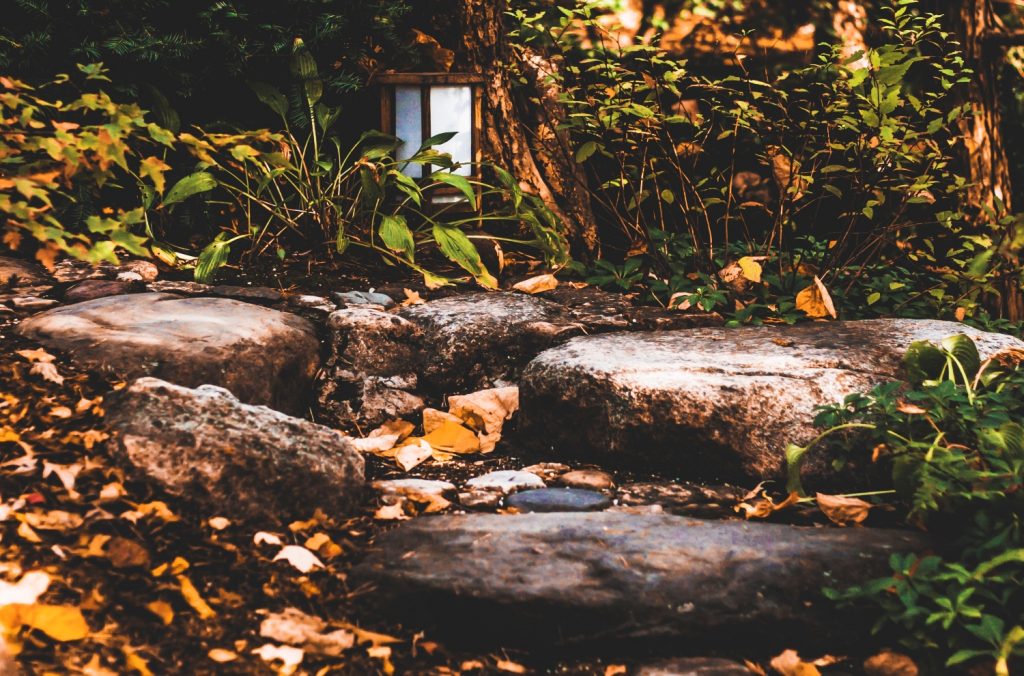
Around water features
If you’ve got a water fountain and you’re eager to make it the focal point of your backyard, use some cedar mulch to draw attention to the space.
Cedar mulch helps to provide traction around water features, so you and your guests don’t accidentally lose your footing.
Even if you haven’t got a fancy water feature, you can use cedar mulch around your bird baths to dress them up a bit.
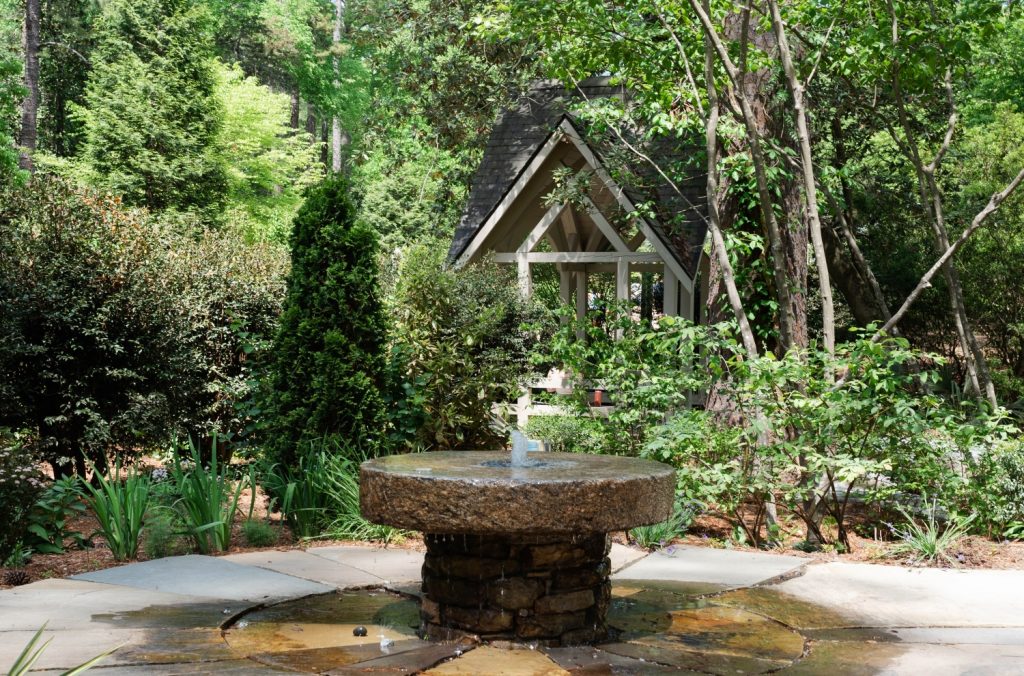
Preparing plants for winter
Remember, mulch helps insulate the soil. So use cedar wood chips to your advantage by using them to prepare your plants for winter.
Applying a thick layer of cedar mulch around your plant’s roots helps keep them warm during the cold months.
Even evergreen plants that are native to cold climates can benefit from the insulating properties of cedar mulch.
Applying mulch to prep your plants for winter will help the roots stay adequately hydrated until spring rolls around once more.
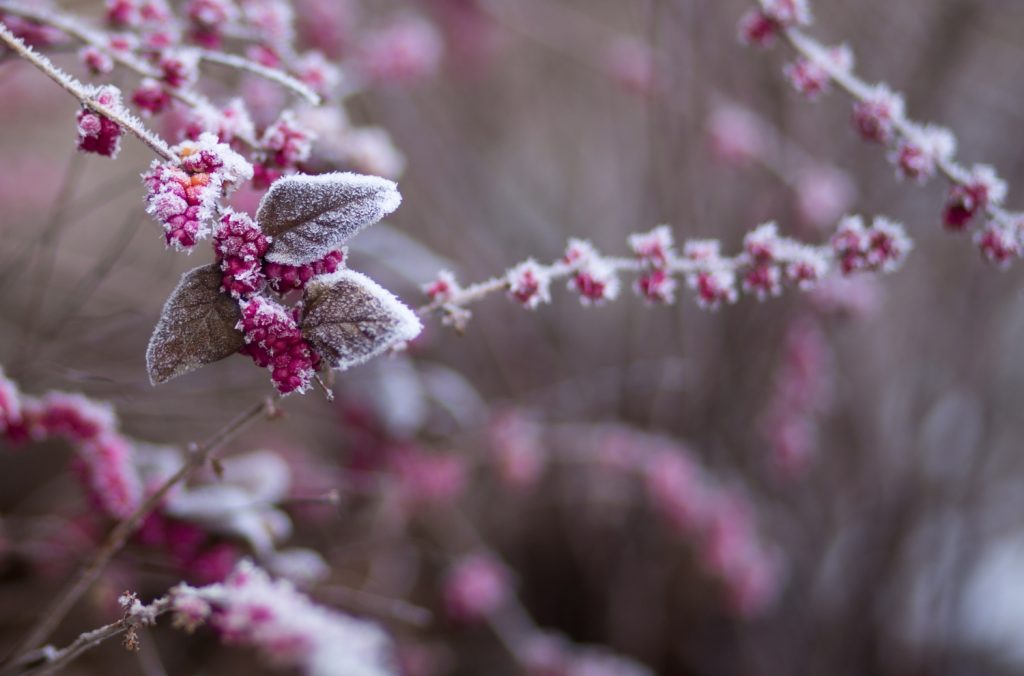
How often should you apply cedar mulch?
Because cedar mulch breaks down slowly, you probably won’t need to replace it every year, unless you just like the look of fresh wood chips.
In general, you can expect to replace cedar mulch every 2 to 5 years.
This is just a rule of thumb and depends on a variety of factors, including temperature, erosion, soil type, and rainfall.
Measure the depth of your cedar mulch annually to determine if and when you need to reapply.
Can you mix cedar mulch with other mulches?
Yes, you certainly can! And this is a great way to cut down on costs.
Mixing cedar mulch with pine, oak, or fir mulch can make mulching much more affordable. This is a great choice for gardeners on a budget.
You can even use cheaper materials, like straw, lawn clippings, cardboard, or newspaper, to create a base layer, then spread a thin layer of cedar mulch on top of that to make it look more visually appealing.
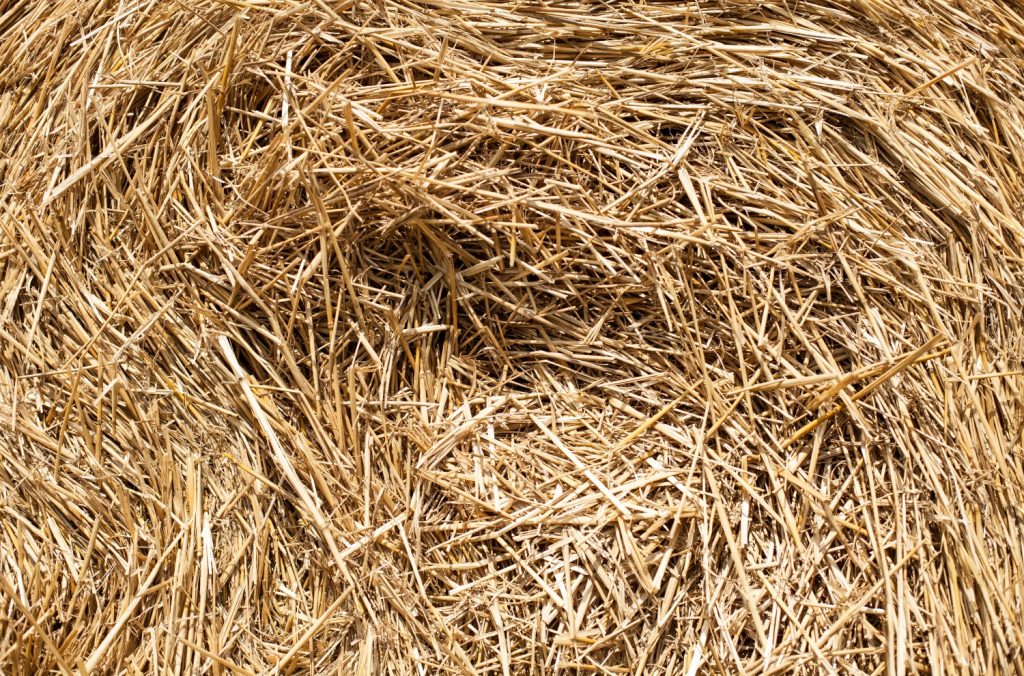
How often should you water your plants when using cedar mulch?
There’s a slight learning curve when you apply mulch. Some gardeners think that if the mulch is wet, then their plants are also adequately hydrated. But that’s not necessarily the case.
Mulch acts as a sponge. If the soil below is saturated with water, then the mulch will help keep it hydrated as it dries out.
But if the soil is only slightly wet, or if it’s dry, then the mulch can actually pull moisture away from the soil.
For this reason, you’ll need to move the mulch and feel below the surface of the soil to determine whether or not your plants need to be watered.
If the soil feels dry 2” deep, then water your plants well until it’s completely saturated.
If the soil is still wet, then avoid watering until it dries out a bit more. Overwatering can be just as detrimental as underwatering.
It may take you some time to reconfigure your watering schedule, but just be patient and observant.
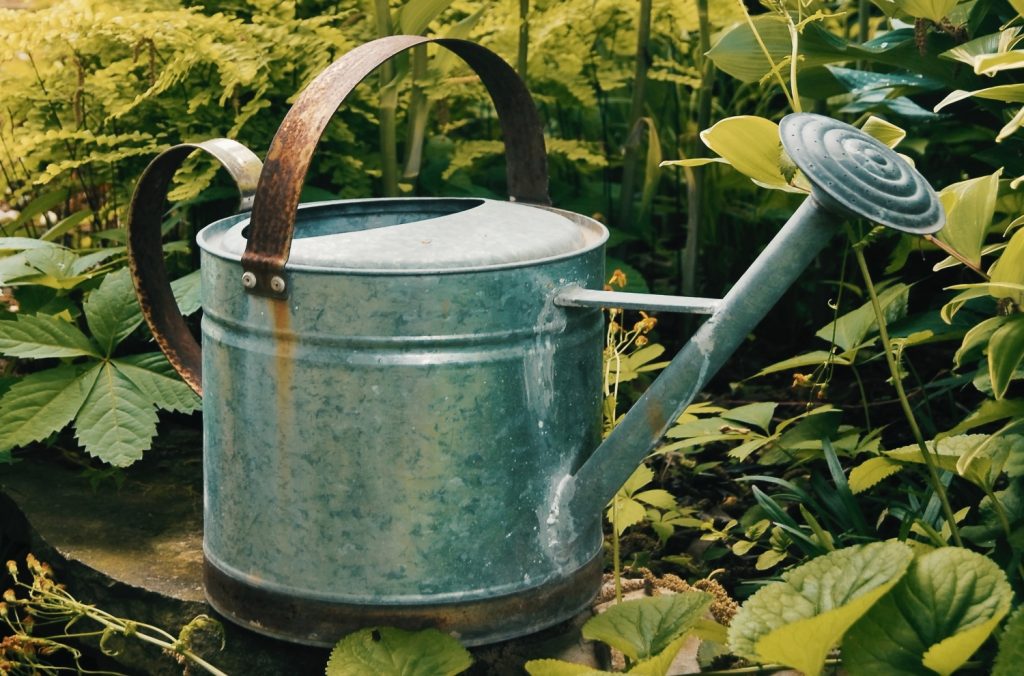
Cedar mulch looks great and is environmentally friendly
Overall, cedar mulch is an excellent choice of mulch, whether you use it for your flower beds or vegetable garden.
This hardwood mulch is long-lasting and can save you time, labor, and money.
To top it all off, cedar mulch is 100% environmentally friendly and will add structure to your native soil over time without introducing harmful toxins.
Cedar mulch’s natural insect-repelling properties allow you to protect the plants in your garden, without having to rely on harmful chemicals that can contaminate your ecosystem.
